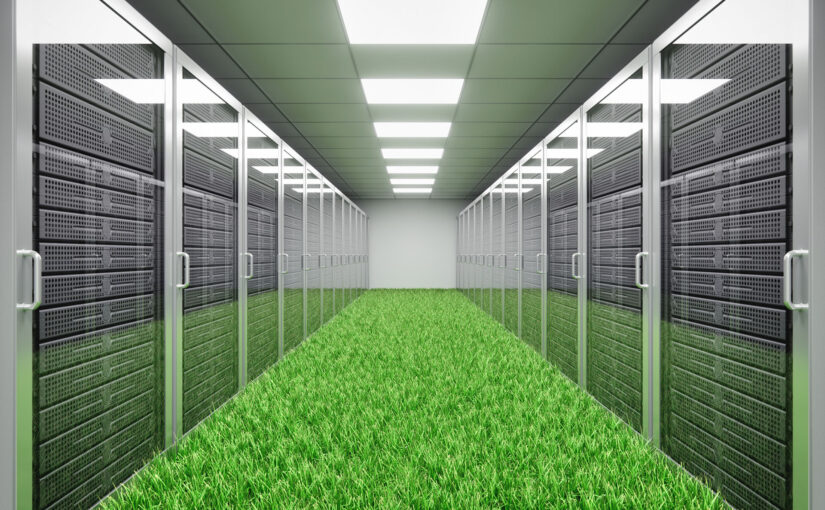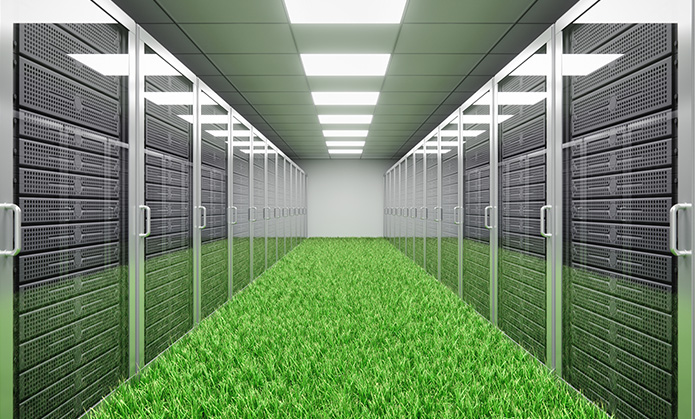Decarbonizing Data Centers Gives Grid Flexibility


When it comes to energy, data centers are mostly known for how much they consume—but they can give as well as take.
Globally, data centers consumed 220 to 320 TWh of electricity in 2021, or 0.9% to 1.3% of total electricity demand. Within the U.S., they account for about 2% of total electricity use, consuming 10 to 50 times the energy per floor space of a typical commercial office building.
However, rising demand for both data centers and sustainable solutions is causing the industry to shift its approach to tackling both issues. Data centers are driving the renewable energy transition by deploying grid-scale, carbon-free energy.
With companies like Google and Microsoft leading the charge in pledges to reduce their emissions and run data centers 24 hours a day, 7 days a week, 365 days a year on clean energy, we can expect progress by way of industry emissions reductions. Even so, there is far more that can be done for data centers across the board in terms of using energy more responsibly to drive decarbonization.
As data centers look towards a bright future with an eye on growth, efficiency and sustainability, they can join Virtual Power Plants (VPPs) to service their local communities and support the grid by optimizing distributed energy resources (DERs). CPower’s VPP Marketplace, for example, simplifies how data centers communicate, control, and optimize performance of their DERs, rewarding them for reducing their energy while meeting the demands of the grid. This approach will also increase data center sustainability and profitability while increasing community resiliency.
Leveraging Data Centers’ DERs to Achieve Resilience and Reliability
As more front-of-the-meter clean energy resources are integrated with the grid, operators and utilities beg the flexibility of behind-the-meter DERs. Data centers with DERs can complement renewable intermittency to balance supply and demand as well as support the grid in the face of climate change.
Unfortunately, extreme weather events are growing in frequency, threatening a number of the nation’s already ailing electric grids, including across PJM during Winter Storm Elliott in December and throughout the country during a record-breaking summer last year.
There were, however, demonstrations of what’s possible, when energy user DERs helped the grid during those events as well as when Texas data centers contributed curtailment of their power usage from the grid via ERCOT’s demand response program in February 2021, to ensure the grid maintained the necessary frequency to remain online during Winter Storm Uri.
Data centers can leverage demand response programs to optimize idle DERs, including energy efficiency, generator sets, uninterruptible power supplies and solar PV, to maintain reliability during extreme weather or grid stress. In doing so, a data center’s campus can act as a VPP by serving as a flexible resource capable of balancing the grid and ensuring 24/7/365 uptime to a site’s operations as well as its customers’ businesses, in addition to increasing resilience for homes and businesses in the community it serves.
Delivering Community-level Sustainability
Businesses are under increased scrutiny from customers and consumers to act sustainably, investors have recognized long-term gains associated with carbon neutrality and regulators are advancing laws that reflect and address society’s shift towards a clean energy future. The convergence of these factors has created a timely opportunity for data centers to deliver clean and sustainable flexible energy.
For perspective, that lone MW of permanently reduced demand would spare the ozone the GHG equivalent of more than 8.9 million miles driven by an average internal combustion passenger vehicle. By shifting energy usage to a time when the grid mix is cleaner—during the middle of the day when the sun is shining and solar is more prevalent than coal, for example—organizations can lower their overall emissions. When the sun sets, or when DERs go offline, demand-side resources from data centers can help keep the grid balanced and avoid having to fire up costly, dirty peaker plants.
Turning Your Efficient Data Center into a Money Center
While the environmental benefits of energy efficiency projects are substantial for participating data centers, the financial earnings are worth quantifying, too. As an example, when monetized in the PJM capacity market, organizations can achieve permanent load reduction resulting from energy efficiency projects they have completed or will complete in the future.
Increased participation in demand response programs at the ISO and utility levels across the United States offer new tools for grid operators to balance their needs while supporting a cleaner generation mix. Data centers are the ideal candidate to earn revenue through demand response and enable an uninterrupted power supply.
Given the need to be up and always running, data centers utilize N+1 redundancy and are equipped with excess generator capacity which exceeds the center’s total peak demand. Such high-capacity emergency generation systems put data centers in prime position to earn significant revenue with demand response, money that can be used, among other things, to offset a participating organization’s hefty electricity bill, fund equipment or infrastructure upgrades or to pass along to customers in the form of lower rates.
Conclusion
Like the grid, data centers across the world are positioning themselves for a more sustainable tomorrow. The sheer size of the industry alone is large enough to drive meaningful emissions reductions simply by reducing its power demand. As grid operators and technology companies alike work towards a cleaner and more dependable energy future, measuring the impact of demand-side management programs offers a clear path for data centers to further demonstrate their commitment to sustainability.
Most U.S. data centers have energy assets that can help the grid transition to a clean, flexible and dependable future. Call us at 844-276-9371 or visit CPowerEnergy.com/contact to explore how you can use your data center’s energy assets to earn revenue for helping the grid and improving the world’s sustainability.
Nate Soles
As CPower’s Vice President of National Accounts, Nate manages dozens of data center clients and strategies across North America.


